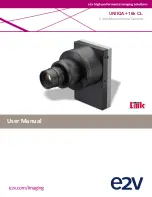
31
Using the Flash
Bas
ic Ph
otography an
d Pl
ayba
ck
:
A
(Auto)
M
ode
B
Shooting When the Flash Is Disabled (
W
) or Lighting Is Poor
•
Use of a tripod is recommended to stabilize the camera during shooting and avoid the effects of
camera shake.
•
The
E
indicator is displayed when the camera automatically increases sensitivity. Pictures taken
when
E
is displayed may be slightly mottled.
•
The noise reduction function may be activated with some shooting conditions such as dim
lighting. More time than usual is required to record pictures to which noise reduction is applied.
B
Note on the Flash
When using the flash, reflections from dust particles in the air may appear as bright spots in pictures.
To reduce these reflections, set the flash to
W
(off).
C
The Flash Lamp
The flash lamp indicates flash status when the
shutter-release button is pressed halfway.
•
On: Flash will fire when picture is taken.
•
Blinks: Flash charging. Wait a few seconds and try
again.
•
Off: Flash will not fire when picture is taken.
If the battery is low, the monitor display will turn off,
and remain off, until the flash is fully charged.
C
The Flash Mode Setting
The default flash mode setting varies with shooting mode.
•
A
(auto):
U
(auto)
•
Scene: varies with the selected scene mode (
A
53–59)
•
F
(smart portrait): fixed at
U
(auto) when
Off
is selected for
Blink proof
;
W
(off) when
On
is
selected for
Blink proof
(
A
64)
•
s
(subject tracking):
U
(auto)
There may be functions with which the flash cannot be enabled. See “Camera Settings that Cannot
Be Applied Simultaneously” (
A
49) for more information.
The flash mode setting applied in
A
(auto) mode is stored in the camera’s memory even after the
camera is turned off, and reapplied the next time
A
(auto) mode is selected.
C
Red-eye Reduction
This camera uses advanced red-eye reduction (“In-Camera Red-Eye Fix”).
If the camera detects “red eye” while a picture is being recorded, the affected area will be processed
to reduce red-eye before the picture is saved. Note the followings when shooting.
•
More time than usual is required to record pictures.
•
Red-eye reduction may not produce the desired results in all situations.
•
In extremely rare instances, areas not subject to red-eye may be affected by red-eye reduction
processing; in these cases, choose another flash mode and try again.
Summary of Contents for COOLPIX S205
Page 1: ...DIGITAL CAMERA User s Manual En ...
Page 183: ......
















































